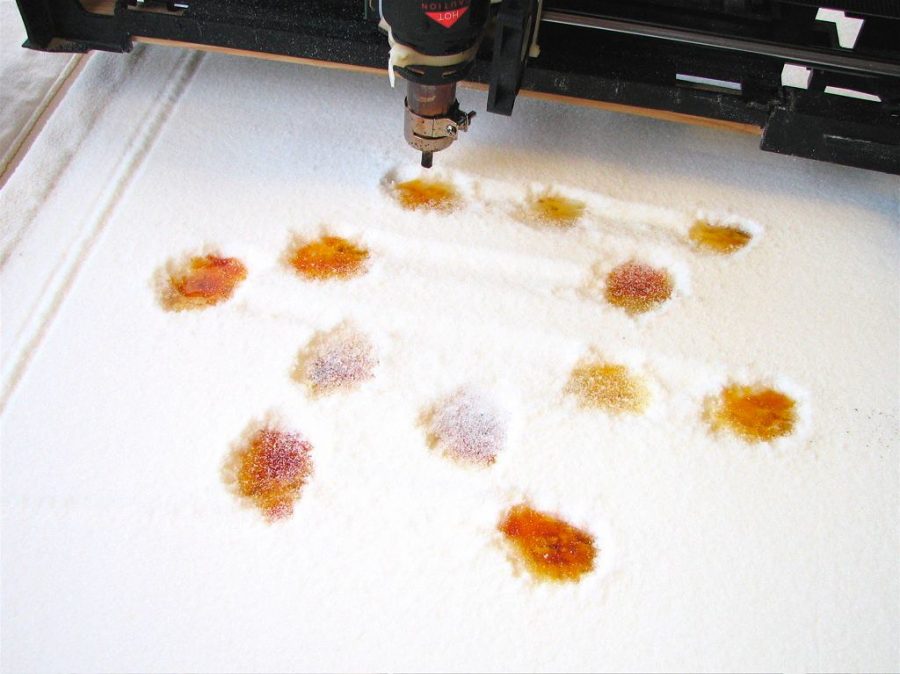"Printing" by oskay is licensed under CC BY 2.0
Since the first 3D printed food broke out, there has been a growing interest in this new high-tech food. This new process can be used to replace human dependency on animal products and remedy the world hunger problem.
3D printing food
Most meat-eaters aren’t usually well versed in plant-based world news. However, everyone’s interest has peaked since the first word of 3D printed food broke out.
Picturing food being made from a high-tech machine is what likely confounds people. A new boundary has been crossed in modern technology, but it’s simultaneously ominous and brilliant. Besides the idea sounding straight out of a science fiction movie, people could be unnerved by the fact that a robot is essentially creating their food for them. As bizarre as it seems, the process is relatively straightforward.
There are currently only a few companies experimenting with the new food tech because they secured patents quickly. The process begins with a compound formed from soy and pea proteins, along with other plant derivatives, is used as an “ink” or “filament” for the printer. Some of these innovators go as far as creating separate cartridges for imitating fat, blood, and muscle in an attempt to create an identical meat-like texture. Production speed of these alternative meats may even mimic the cattle-industry’s daily output so that it can disrupt the food supply chain known to harm the environment.
The perceived purpose behind this extraneous process to achieve a mirrored version of meat is to replace human dependency on animal products. 3D printing these plant compounds caters toward people who thoroughly enjoy the texture, taste, and experience of eating meat to make the transition to a more vegetarian lifestyle easier. If people are convinced that they aren’t making a sacrifice to their own happiness or taste buds, they might be inclined to opt for the more sustainable choice.
Putting animal-welfare and environmental agenda aside, printing these engineered vegan steaks opens another avenue for remedying the world hunger problem. The ability of mass producing food that’s more dense in plant-proteins could be a cost-effective way to receive proper nutrition. The entire process of raising, killing, and processing animal products would be eliminated, plummeting the price markup. Saving this money could help put a stronger emphasis on the distribution for the meatless products to get to those in need.
Granted the probability of those outcomes lean toward the idealistic side, but the possibilities with this technology appear to be limitless. Picturing an everyday reality that includes 3D printed food is still almost unfathomable. The chance of this technology spreading and becoming a part of working class homes has never been higher.
